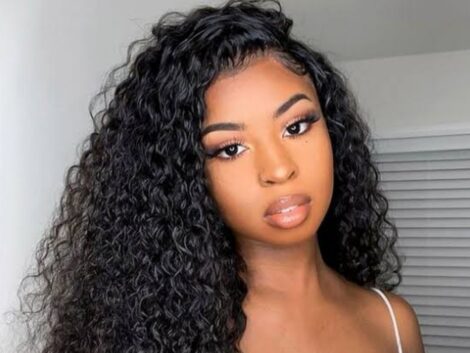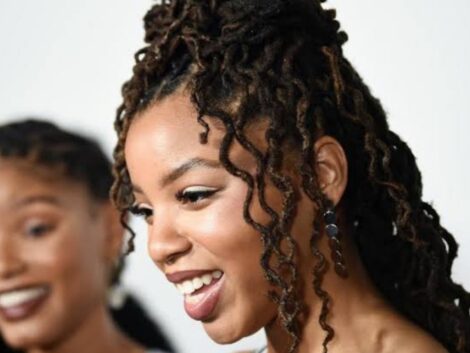You should choose your hair lace by prioritizing your personal preferences, needs, and the specific hairstyle you desire for. Various kinds of hair laces are available and have their own characteristics and benefits. Here goes a few popular options:
Swiss Lace
Swiss lace is very high-end but extremely thin and delicate, which provides a natural-looking hairline. It is lightweight and blends well with almost every skin tone. However, due to its thinness, it is usually less durable and requires extra care during application and removal.
French Lace
This one is a little bit thicker and more durable than the Swiss one. It provides a balance between natural appearance and durability. French lace is considered a perfect choice if you’re looking for something that can be worn quite often.
HD (High Definition) Lace
HD lace is a newer type of lace that is thinner and more transparent than traditional laces. It provides an even more natural and undetectable look, as it can easily blend with the scalp. HD lace is popular for achieving flawless, “invisible” hairlines.
Transparent Lace
Transparent lace is similar to regular lace but with a lighter color that is suitable for a wider range of skin tones. It offers a more versatile option if you want to experiment with different hairstyles and hair colors.
But keep in mind that- the quality of the lace varies depending on the brands and suppliers. It’s recommended to do thorough research, read reviews, and consider the recommendations of experienced hair professionals or stylists who can help guide you toward the best option for your specific needs.
How much is a full lace braided wig?
The price of a full lace braided wig can vary depending on various factors such as the brand, quality of the wig, length, density, and complexity of the braided style. Also market trends and availability is also major factor here. Providing an accurate price is pretty difficult without knowing the specific requirements. However, full lace braided wigs generally range from around $100 to $500 or more. We recommend you communicate with specific wig suppliers and online retailers or visit local beauty stores to get a clear idea about pricing.
Can you interlock on dry hair?
Yes, you can interlock dry hair. Interlocking is a widely-used hairstyling technique used to create and maintain dreadlocks. Traditionally, it involves taking a section of hair and weaving it in a specific pattern to encourage the hair to lock and form into a dreadlock. Interlocking can be done on both wet and dry hair, although some people prefer to work with damp hair as it may be easier to manipulate and less prone to breakage.
When interlocking dry hair, it’s important to be gentle and take extra care to avoid causing damage or breakage. Here are a few tips to consider:
Moisturise the hair
Before interlocking dry hair, it’s beneficial to apply a small amount of moisturizing product or oil to the hair to add some moisture and lubrication. This can help prevent excessive pulling or tugging on the hair, reducing the risk of breakage.
Work in small sections
Divide the hair into small, manageable sections to make the interlocking process easier and minimize stress on the hair. This allows you to focus on each section individually and maintain control over the technique.
Be gentle
When interlocking dry hair, be careful not to pull or tug too forcefully. Use gentle and controlled movements to avoid causing damage to the hair strands or the scalp.
Take breaks if needed
If you notice any discomfort or excessive tension while interlocking, it’s important to take breaks as necessary. Allow the hair and scalp to rest and recover to prevent over-manipulation.
Remember, interlocking can be a time-consuming process, and it’s essential to have patience and take care of your hair to ensure healthy and well-maintained dreadlocks. If you’re unsure about the technique or need further guidance, consider consulting with a professional loctician or a stylist experienced in interlocking.
Why use a braid line?
Braiding hair has been a popular practice for centuries and serves several purposes. Here are some reasons why people use braid lines for their hair:
- Protective Styling: Braiding is a way to protect the hair from damage caused by environmental factors, manipulation, and excessive heat or styling. It keeps the hair contained and reduces tangling, breakage, and split ends.
- Versatility: Braids offer a wide range of styling options. They can be simple and practical for everyday wear or intricate and decorative for special occasions. Different braid styles include French braids, Dutch braids, fishtail braids, cornrows, box braids, and more.
- Hair Growth and Length Retention: Braids can help with hair growth and length retention. Keeping the hair in braids minimizes the need for constant manipulation and combing, reducing the risk of breakage. This can lead to longer, healthier hair over time.
- Manageability: Braided hair is generally easier to manage. It keeps the hair in place and reduces frizz, allowing individuals to have more control over their hairstyles. This can be especially beneficial for those with textured or curly hair types.
- Cultural Significance: Braiding holds cultural significance in many communities and is passed down through generations as a traditional practice. It can represent cultural identity, heritage, and a sense of belonging.
- Fashion and Self-Expression: Braids can be a form of self-expression and a way to showcase personal style and creativity. Different braid patterns, colors, and accessories can be used to achieve unique looks that reflect individual preferences and trends.
It’s important to note that while braiding can offer these benefits, it’s essential to maintain proper hair care practices even while wearing braids. This includes regular washing, moisturizing, and avoiding excessive tension on the hairline to prevent potential damage or hair loss.
How long does it take to interlock dreads?
The time it takes to interlock or tighten dreadlocks can vary depending on several factors, including the length and thickness of the hair, the skill level of the person performing the interlocking, and the desired level of tightness. On average, it can take anywhere from a few hours to several hours to interlock dreads.
Interlocking involves using a tool, such as a latch hook or interlocking needle, to pull the loose hairs from the root of the dreadlock through the existing dreadlock, creating a tighter and more compact lock. The process is repeated for each individual dreadlock, and the time required will depend on the number of dreads and the speed at which the interlocking is done.
It’s important to note that interlocking can be a time-consuming process, especially for longer and thicker dreads. It may also require breaks and rest periods to prevent strain on the scalp and hands. Additionally, the time required for interlocking may also depend on the experience and proficiency of the person performing the task. If you are getting your dreads interlocked by a professional, they will be able to provide a more accurate estimate based on your specific hair type and desired results.
Where is the best hair lace made?
When it comes to hair lace, the term typically refers to lace used in the construction of hairpieces, wigs, and hair extensions. The quality and craftsmanship of hair lace can vary depending on several factors, including the materials used and the manufacturing process.
Historically, some of the best hair lace has been produced in regions known for their expertise in wig-making and hair-related industries.

Currently, two locations are often associated with high-quality hair lace:
- Switzerland: Swiss-made hair lace has long been regarded as one of the finest in the industry. The country has a reputation for precision and meticulous craftsmanship in lace production. Swiss lace is known for its delicate, lightweight nature, which allows for a natural-looking hairline and comfortable wear.
- France: France also has a rich tradition of producing high-quality hair lace. French lace is recognized for its intricate designs and superior durability. French lace is often used in high-end wigs and hairpieces due to its ability to withstand daily wear and styling.
However, it’s important to note that hair lace can be sourced and manufactured in various countries worldwide, and the quality can vary based on individual manufacturers and their processes. It’s always recommended to research and consult with professionals or reputable suppliers when looking for the best hair lace for your specific needs.
Lastly, check out the mane caper shop.





